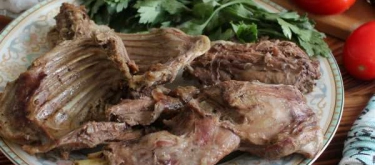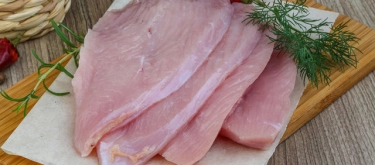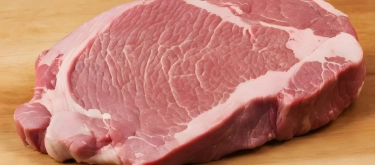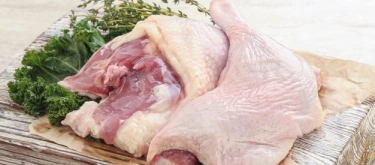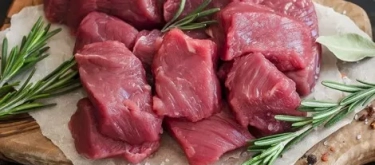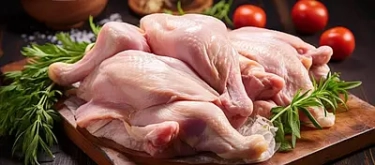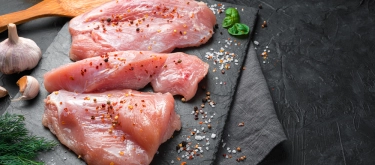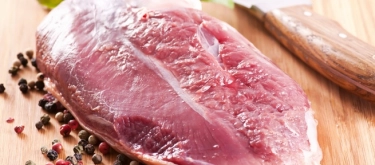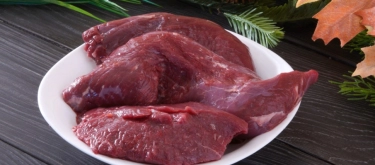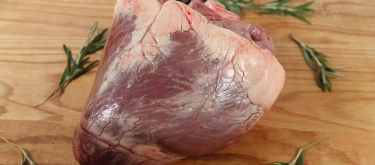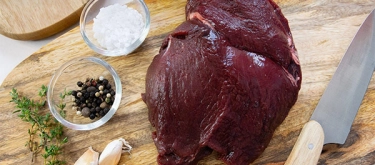Rabbit Meat: Taste Profile, Aroma, Benefits and Health Risks
Rabbit meat, known for its delicate flavor and tender texture, has been appreciated as a dietary staple across Europe and the Mediterranean for centuries. Widely regarded as a gourmet ingredient due to its nutritional value and culinary versatility, rabbit is a lean, mild, and flavorful meat often featured in classic dishes such as French Lapin à la Moutarde, Spanish paella, and Italian rabbit ragù.
Rabbit meat is animal-based protein and unsuitable for vegetarians or vegans. It is naturally gluten-free and usually well-tolerated by individuals sensitive to red meats. Always cook thoroughly to ensure food safety.
What does Rabbit Meat taste like?
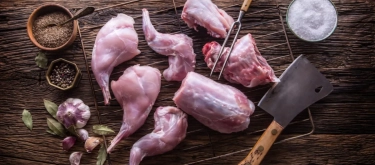
Complete Sensory Description
Taste:
Rabbit meat offers a uniquely delicate, mildly sweet flavor, comparable to poultry, but with subtle, richer nuances. Its flavor is gentle, yet distinctly earthy, with faint nutty undertones, particularly noticeable in slow-cooked or braised dishes.
Aroma:
When raw, rabbit has a mild, fresh aroma similar to chicken but more delicate. Cooked rabbit emits subtle aromas of mild caramelization, gentle earthiness, and savory notes, enhancing its appeal in gourmet dishes.
Texture:
Rabbit meat is exceptionally tender, fine-grained, and lean, offering a pleasingly soft yet firm texture. Properly prepared rabbit retains moisture and tenderness, easily falling off the bone when slow-cooked.
Appearance:
Fresh rabbit meat is pale pink, firm, and lean, with minimal visible fat. When cooked, it typically becomes pale, tender, and moist, developing golden or caramelized exteriors depending on cooking methods.
Varieties and Culinary Uses
-
Whole Rabbit:
Ideal for roasting, braising, or slow cooking, allowing flavors to fully develop and meat to become tender. -
Rabbit Legs and Thighs:
More muscular, ideal for stewing, braising, grilling, or confit-style preparations. -
Rabbit Saddle and Loins:
Leanest, most tender cuts, suited for grilling, sautéing, or quick cooking to maintain optimal texture and flavor.
In-depth Flavor Analysis
-
Delicate Sweetness:
Rabbit meat possesses a gentle sweetness, harmonizing beautifully with both subtle and robust ingredients, herbs, and sauces. -
Earthiness & Nutty Undertones:
Slow cooking methods, especially braising and roasting, intensify rabbit’s subtle earthy and nutty notes, creating depth in flavor profiles. -
Lean & Tender:
Low fat content contributes to rabbit’s clean, mild flavor, delicate juiciness, and refined mouthfeel, making it an appealing gourmet protein option. -
Flavor Evolution:
Rabbit’s mild flavor gains complexity when braised, roasted, or slow-cooked, developing tender textures and layered, savory-sweet nuances.
Culinary Applications
-
Classic European Recipes:
Essential ingredient in dishes such as French rabbit in mustard sauce (Lapin à la Moutarde), Italian rabbit ragù, and Spanish rabbit paella. -
Roasting and Braising:
Ideal for slow-roasting or gentle braising, allowing rabbit meat to achieve maximum tenderness and subtle, complex flavors. -
Grilling and Sautéing:
Rabbit loins and tender cuts benefit from quick grilling, sautéing, or pan-frying, preserving their delicate taste and texture. -
Stews and Soups:
Rabbit lends itself well to hearty stews, soups, and casseroles, infusing dishes with gentle flavor and lean protein.
Selection and Storage
Selecting Quality Rabbit Meat:
- Choose fresh rabbit meat that appears moist, firm, pale pink, and free from discoloration or excessive moisture.
- Prefer clearly labeled, vacuum-sealed or packaged rabbit meat from reputable sources indicating freshness and origin.
Storage Recommendations:
- Refrigerate fresh rabbit meat immediately at temperatures below 4°C (39°F) and consume within 2–3 days.
- For longer storage, freeze rabbit tightly wrapped; consume frozen meat within 6–9 months for optimal quality.
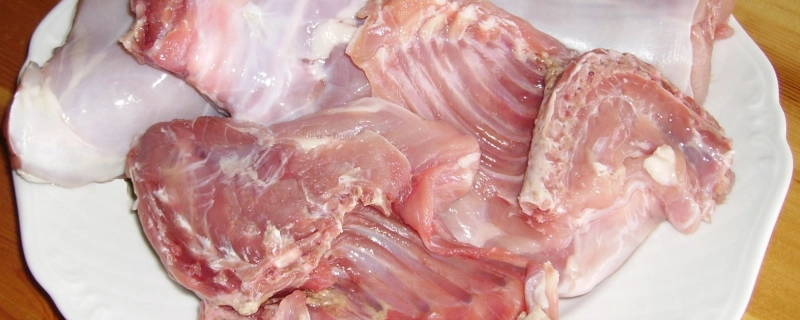
Nutritional Insights
-
Lean Protein Source:
Rabbit meat is exceptionally lean, high in protein, and lower in calories compared to most meats, suitable for weight-conscious and protein-focused diets. -
Rich in Vitamins and Minerals:
Provides significant amounts of vitamin B12, B3 (niacin), B6, iron, zinc, phosphorus, selenium, and potassium—essential nutrients for immune health, energy production, and overall wellness. -
Low Cholesterol and Fat:
Rabbit meat contains significantly less saturated fat and cholesterol compared to beef or pork, making it heart-healthy when consumed as part of a balanced diet.
Expert Insights & Culinary Tips
-
Cooking Recommendations:
Experts recommend gentle, slow-cooking techniques (braising, stewing, roasting) to preserve moisture and tenderness due to rabbit’s low-fat content. -
Flavor Pairings:
Rabbit pairs excellently with aromatic herbs (thyme, rosemary, sage, tarragon), garlic, mustard, white wine, mushrooms, dried fruits (prunes, figs), and cream-based sauces. -
Marination & Preparation:
Marinate rabbit briefly in herbs, garlic, or wine to enhance flavor, tenderness, and moisture retention during cooking.
Interesting and Curious Facts
- Rabbit meat has a long culinary history dating back to Ancient Rome, considered a gourmet delicacy due to its tender texture and delicate flavor.
- Rabbits have traditionally been an essential livestock choice in rural communities across Europe, appreciated for their lean meat, quick growth, and minimal environmental impact.
- In France and Italy, rabbit remains a highly valued ingredient featured prominently in both everyday cooking and upscale restaurants.
How to Enjoy Rabbit Meat
- Prepare classic Lapin à la Moutarde (rabbit in mustard sauce) for sophisticated French-inspired meals.
- Slow-cook rabbit legs with mushrooms, onions, and red wine for tender, savory dishes.
- Grill or sauté rabbit loin with herbs, garlic, and citrus for quick, flavorful meals.
- Include rabbit in hearty stews, casseroles, or paellas for gourmet dishes rich in protein and flavor.
Harm and Dietary Considerations
-
Proper Cooking Essential:
Thorough cooking to recommended internal temperatures (minimum 71°C or 160°F) is critical for food safety, as rabbit meat can contain harmful bacteria. -
Ethical and Cultural Preferences:
Cultural attitudes and ethical considerations vary significantly; always select rabbit meat sourced from humane, sustainable farms. -
Low-Fat Content and Cooking:
Due to its leanness, rabbit meat requires careful cooking techniques to avoid dryness, maintaining tenderness and juiciness.
Final Thoughts & Sensory Journey
Rabbit meat provides a refined, gourmet experience characterized by its tenderness, subtle sweetness, and delicate flavors. Ideal for culinary creativity, it combines healthful properties and gastronomic elegance, making every meal a memorable and indulgent experience.
Resources
- McGee, H. (2004). On Food and Cooking: The Science and Lore of the Kitchen. Scribner.
- USDA Food Safety and Inspection Service (2022). Rabbit Meat Nutritional Information and Cooking Safety.
- Food and Agriculture Organization (FAO). (2021). Nutritional Benefits and Culinary Uses of Rabbit Meat.
